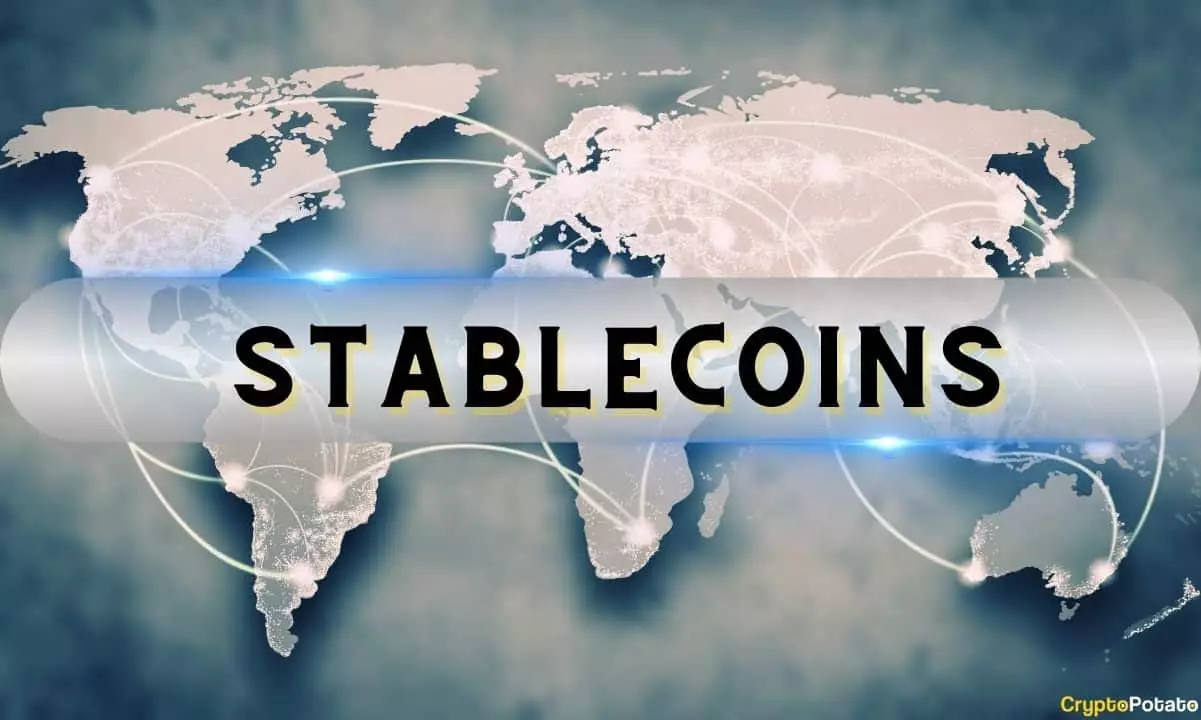The world of finance is witnessing a seismic shift, one that traditional institutions must acknowledge or risk being left in the dust. The recent explosion in the tokenized treasury market—an astounding 544.8% growth from last year—is a clear indication that investors are hungry for alternative assets that promise greater security and adaptability in our rapidly changing economic landscape. While fiat-backed stablecoins are flourishing, it is in the sector of tokenized treasuries that we observe a remarkable pivot toward innovation and decentralized finance.
As conventional financial entities struggle to maintain relevance against a backdrop of trademark inefficiencies and bureaucratic entanglements, their digital counterparts are making inroads that promise a far more fluid user experience. Unlike stagnant institutional offerings, most of which cling to outdated models, the burgeoning tokenized treasury market leaps ahead fueled by agility and consumer desire for better options.
Fiat versus Innovative Decentralized Alternatives
Fiat-backed stablecoins like USDT and USDC dominate in terms of market share, accounting for over 93.5% of the sector. They perform well, partly due to entrenched brand recognition and a semblance of stability. However, it raises an important question: Are these coins trailblazers or mere placeholders that market participants are comfortable with? Traditional finance-backed offerings—such as PayPal’s PYUSD and SocGen’s EURCV—are floundering despite being peddled by massive corporations. Their lack of traction in a market often dictated by crypto-native incumbents signals an inherent weakness—one that digital assets capitalize on.
The paradox is evident: traditional finance has the resources and credibility but lacks the innovation necessary to capture market engagement. No matter how many bells and whistles they attach to their offerings, if they fail to innovate and engage meaningfully with consumer needs, their attempts at relevance will continue to fall flat.
The Rise of Commodity-Backed Tokens
Amidst the general market exuberance lies the realm of commodity-backed tokens, which saw a growth spurt but still remain a minor player, accounting for a mere 0.8% of total fiat-backed stablecoin value. Their rise—an impressive 67.8% during volatile economic conditions, coinciding with gold’s increasing allure—suggests that while volatility often breeds panic, it can also lead to new growth areas. Nevertheless, their slow pace compared to fiat stablecoins underscores the fact that mere commodity appreciation does not equate to mass adoption or enthusiastic user engagement.
Tokens like Tether Gold (XAUT) and PAX Gold (PAXG) may lead this niche, but the sector remains fundamentally underrepresented in a world increasingly fraught with uncertainty. They generate intrigue, yet the demand for tokenized commodities remains stunted. Without substantial user adoption beyond investment speculation, this sector will struggle to evolve into something more meaningful.
The Paradigm Shift of Tokenized Treasuries
In contrast, the astonishing surge of tokenized treasuries presents a compelling narrative for the future of finance. The market’s astonishing leap to a $5.6 billion valuation, bolstered by innovative products like BlackRock’s BUIDL token, underlines an undeniable truth: the appetite for decentralized finance is growing, and traditional institutions need to adapt quickly or face extinction. The rapid pace of this segment—a whopping $2.3 billion added in just one month—suggests an urgent need for Treasuries and similar assets to grasp an audience seeking security amidst turbulent times.
These digital assets find a natural home in blockchain environments; Ethereum’s dominance in this arena resounds with potential. Even with remarkable growth, however, we’re noticing a glaring disconnect: over 11,000 individual on-chain addresses for tokenized treasuries indicate a relatively narrow user base. This is not merely a statistic; it signals a warning. If user engagement does not match market growth, the sustainability of this burst of enthusiasm is in jeopardy.
A Call for Transformation
Ultimately, the remarkable upheaval in the tokenized treasury landscape should serve as a wake-up call for traditional financial structures. The growth trajectory seen in April 2025 points toward a future rich in opportunities for those who embrace change. TradFi must not just adapt; it needs to innovate boldly, or it risks becoming the very relic it once sought to define. The expanding allure of decentralized finance isn’t simply a trend; it’s a fundamental transformation that promises better service, security, and engagement in an increasingly complicated financial landscape.
As we continue into an era marked by technological evolution and changing consumer preferences, the interplay between traditional finance and digital innovation will determine the future of the financial system as we know it.

